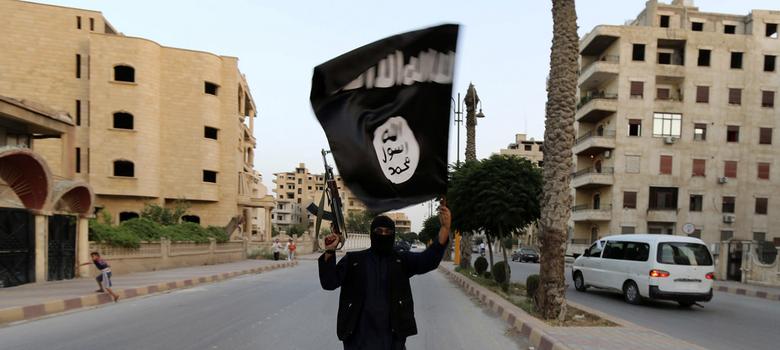Endless spats over tactics, style and aims drove Islamic State away from al-Qaeda – and the two are deadly enemies to this day.
 Libya’s eastern city of Derna recently paid host to a heated battle between the Islamic State and the Mujahideen Shura Council, a group linked to al-Qaeda, whose fighters managed to drive IS out of the city altogether.
Libya’s eastern city of Derna recently paid host to a heated battle between the Islamic State and the Mujahideen Shura Council, a group linked to al-Qaeda, whose fighters managed to drive IS out of the city altogether.
IS had taken over the city of Derna (once a jihadist stronghold against Muammar Gaddafi’s rule in the 1980s and 1990s), and implemented rules so extreme that many of its citizens rose up in an unarmed protest. After IS responded by firing on the citizens, clashes ensued between IS and the Mujahideen Shura Council, or DMSC, which forced IS to flee Derna and hide out in the Green Mountains.
In spite of this victory, the DMSC’s rise hardly ends the reign of repression. It too has an extremist agenda that mandates gender segregation, restrictions on women’s rights and the establishment of sharia courts.
The latest in a series of clashes between the region’s assorted extremist factions, the Derna incident is a reminder of the deep schism that divides these two powerful violent groups – and which dates back to the very origins of IS, and the personality clashes that spawned it.
The way we were
The group that became IS was originally under the leadership of Jordanian Abu Musab al-Zarqawi, who had aims of toppling the Jordanian monarchy, building an Islamic state and purging the world of Muslims who were not staunch believers. Initially called Jama’at al-Tawhid wal-Jihad, the group changed its name to al-Qaeda in Iraq in 2004 when it began to participate in the Iraqi insurgency. At this time, Zarqawi’s allegiance was pledged to Osama bin Laden in return for assistance with funding and forging contacts. The group emerged as one of the region’s most brutal and effective insurgent groups, controlling the flow of resources and foreign fighters into Iraq.
From the beginning, this alliance between Zarqawi and bin Laden was fraught with tensions. Zarqawi had little respect for bin Laden, since he believed that legitimacy was established on the battlefield rather than from the top down. In turn, al-Qaeda’s leaders were concerned with Zarqawi’s excesses, his penchant for over-the-top violence such as beheadings, and campaigns against both Shiites and Sunnis.
After Zarqawi was killed in 2006, the group changed its name to the Islamic State of Iraq until 2013, when it changed its name again to the Islamic State of Iraq and the Levant. In June of 2014 it officially declared a caliphate in Iraq and Syria and changed its name to the Islamic State, and by August of 2011 its current leader, Abu Bakr al’Baghdadi, took control – driving a further rift between IS and al-Qaeda.
The official split
Brash and bold, Baghdadi had no desire to subsume IS under the leadership of al-Qaeda. Baghdadi sent delegates (who were mostly of Syrian descent) into Syria after the Syrian war began in March of 2011. The group called itself Jabhat an-Nusra li Ahli ash-Sham, or al-Nusra Front. The al-Nusra Front established a large presence in Sunni majority areas in Syria. Without consulting al-Qaeda, Baghdadi announced in April of 2013 that he was extending IS into Syria.
Additionally, the al-Nusra Front would be a junior partner in an alliance with ISI. The al-Nusra Front and al-Qaeda quickly rejected this merger. Al-Qaeda repeatedly communicated to Baghdadi to smooth things over with the al-Nusra Front (clashes had taken place in Syria between the al-Nusra Front and IS) and stay out of Syria.
These directives went unheeded, and al-Qaeda officially cut its ties with IS in February of 2014.
The enemy of my enemy
To this day, the two groups are divided along these lines, and others besides.
Al-Qaeda has mostly focused on the “far enemy”, the West, and on not alienating Muslims in the process of achieving its objectives. It has become increasingly concerned that IS’s extravagant brutality (especially its taste for beheading) is alienating most Muslims, and is alarmed at IS’s predatory strategy of taking territory and resources from other rebel groups.
IS, in turn, sees al-Qaeda as ineffective, failing to set up a state. It has certainly done nothing to match IS’s remarkable programme of quietly building organisational structures across multiple countries, creating a de facto state with 8m people living under its control – doggedly committed to its goal of a formally established trans-national Islamic state based on Sharia.
IS has also set up its military along more conventional lines. Its military is hierarchically organised with units divided into brigades, regiments and platoons; al-Qaeda is cellular in structure and much more clandestine. Al-Qaeda has also not been as public about its aims and accomplishments. IS, on the other hand, has been a loud opponent, constantly seeking media attention and exaggerating its role in attacks.
In the clashes in Derna, the Libyan National Army, which is loyal to the internationally recognised Libyan government, actually joined forces with the al-Qaeda affiliated DMSC – something that once would have been unthinkable.
The split between the IS and al-Qaeda could weaken both groups as they continue to clash and kill each other off. The West could well take advantage of this, but a divide-and-conquer strategy will do nothing about the forces at the root of both groups’ emergence: a common dissatisfaction with the corrupt and unfair governments in the region and a security vacuum that the West played a part in creating.
This article was originally published on The Conversation.
No comments:
Post a Comment